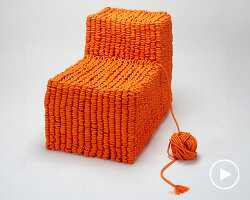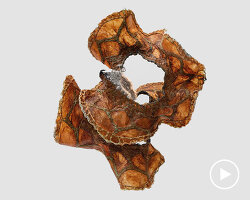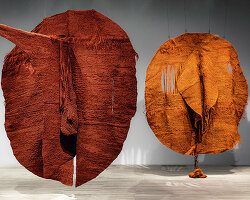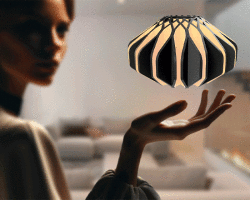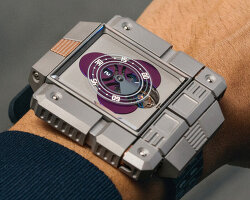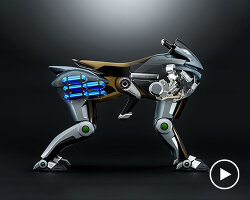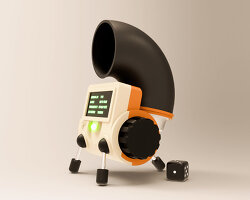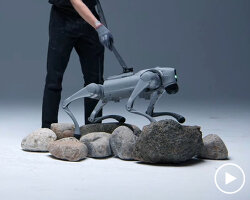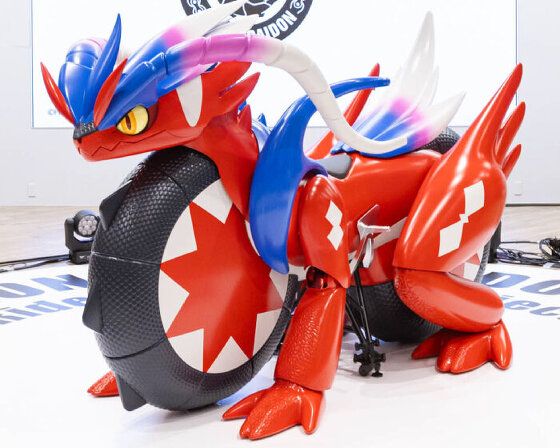Carnegie Mellon University’s researchers develop ‘solid knitting’
Researchers at Carnegie Mellon University have developed a ‘robotic’ machine that uses Solid Knitting. It’s a fabrication technique that asks the device to knit solid and 3D furniture and accessories like a stool, table, and even a pair of sandals using only elastic cord or yarn. Some might think that Solid Knitting is the same as 3D printing, but they’re not. The latter builds by printing, while the former weaves shapes and objects using knitted layers. Instead of being glued together or held by plastic, Solid Knitting relies on elastic cord or yarn stitched together. The current prototype machine has rows of latch needles, or hooked needles with latches that can be closed or opened.
There’s a software that helps run the machine, dictating what customized 3D knitted pieces it should produce. The user feeds the design, and the machine loops and ties that yarn or elastic cord one by one, layer by layer, until it generates the desired furniture, accessory, or object. The Carnegie Mellon University researchers presented their Solid Knitting research and the prototype machine at the annual computer graphics and interactive techniques conference, SIGGRAPH 2024, which ran between July 28th and August 1st. During the event, the research won an honorable mention in the Best Paper competition.
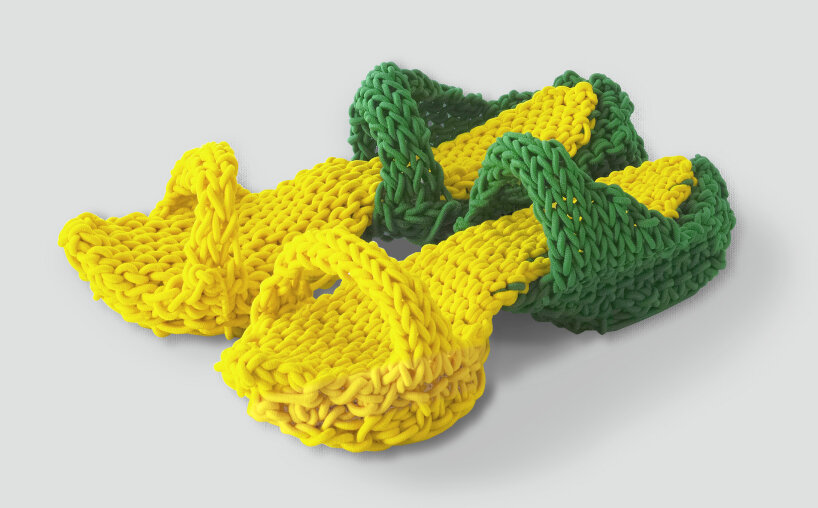
hand-knit sandals | all images courtesy of Carnegie Mellon University
Elastic cord or yarn for sturdy 3D knitted furniture and objects
James McCann, an associate professor in Carnegie Mellon University’s Robotics Institute, leads the research team, but Solid Knitting owes its birth to Yuichi Hirose, a robotics Ph.D. student in Carnegie Mellon University’s School of Computer Science. The duo – along with the other researchers, Angelica Bonilla Fominaya, a Google software engineer, and Mark Gillespie, who recently received his Ph.D. in computer science – helped build the prototype machine. It’s about the size of a clothes dryer, and despite its dimensions, the researchers say it can only generate limited shapes and sizes at the moment, such as triangular or rectangular prisms.
This prototype machine stretches the yarn loops, so the researchers tested using an elastic cord as their yarn because of its flexibility. Even if this material may have a ‘floppy’ or soft feel to it, the researchers were quite content that the resulting solid knits were quite firm. ‘It feels sort of like a stack of felt or the sole of a shoe,’ says James McCann. The goal now is to create a machine that can produce solid objects automatically. The researchers are looking more into improving its operation. In the meantime, viewers can try the same techniques by hand. Yuichi Hirose also says he plans to build a bigger machine for producing solid furniture and a smaller one for more ‘precise’ objects, both of which only use elastic cord or yarn.
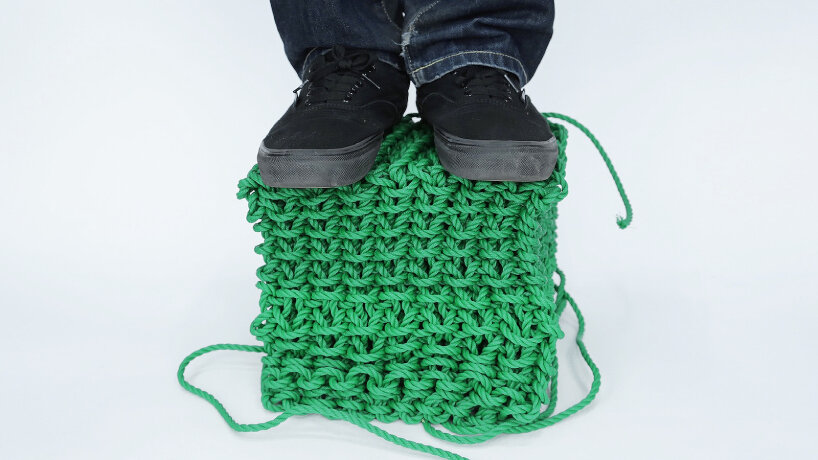
hand-knit cube that doubles as a side table
Using solid knitting techniques by hand with yarn
Yuichi Hirose dreamed a dream, a machine capable of knitting furniture and not just its exterior fabric. He envisioned this could fashion 3D chairs, tables, and other objects. If the users are tired of their love seat, for example, they can just untie it all and reuse the yarn or elastic cord to knit an ottoman. He began building his dream by developing the Solid Knitting machine back in 2018. While he was still in the midst of it, Yuichi Hirose came across James McCann’s software project, which he viewed as helpful to reprogram his machine to make customized 3D knitted pieces.
The two talked about a possible collaboration, and in 2021, Yuichi Hirose joined the Textiles Lab where James McCann is a lead. He was a research assistant there before he later joined the Ph.D. program in robotics. The duo, along with their research team, strive to have their machine achieve its rightful goal, and in the meantime, users can still possibly produce these Solid Knitting 3D pieces by hand, if they wish. The researchers have already released their set of hand-knitting instructions for those who would like to try stitching and weaving their own 3D furniture, accessories, or objects using the Solid Knitting techniques.
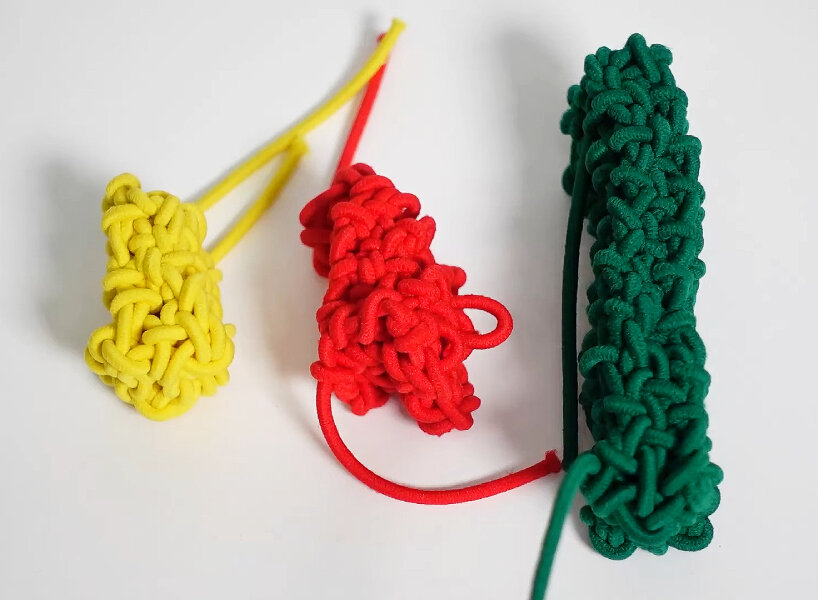
3D Solid Knitting pieces produced by the prototype machine using elastic cord as yarn
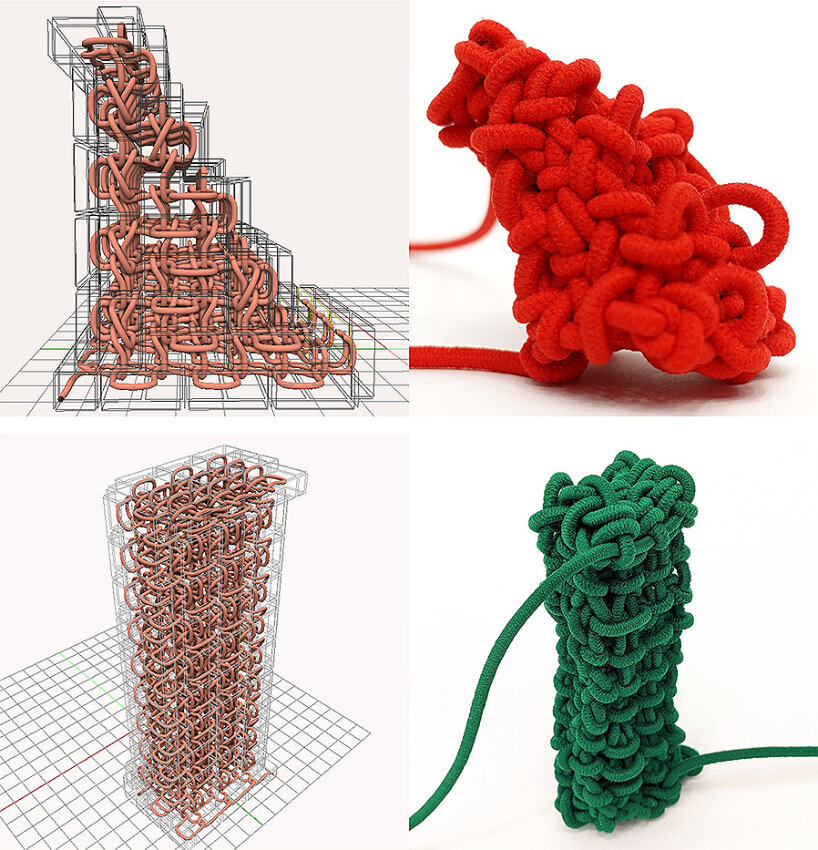
prototype machine producing Solid Knitting objects using elastic cord as yarn
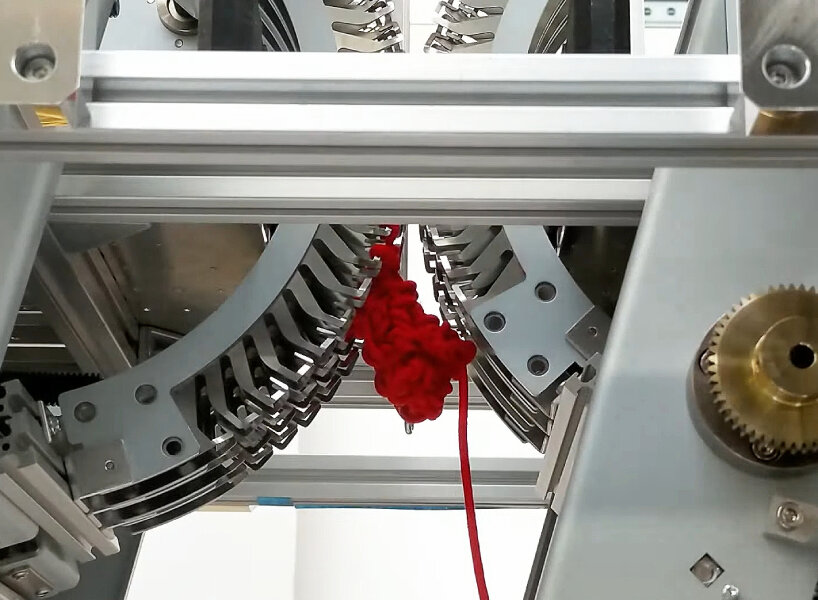
view of the machine
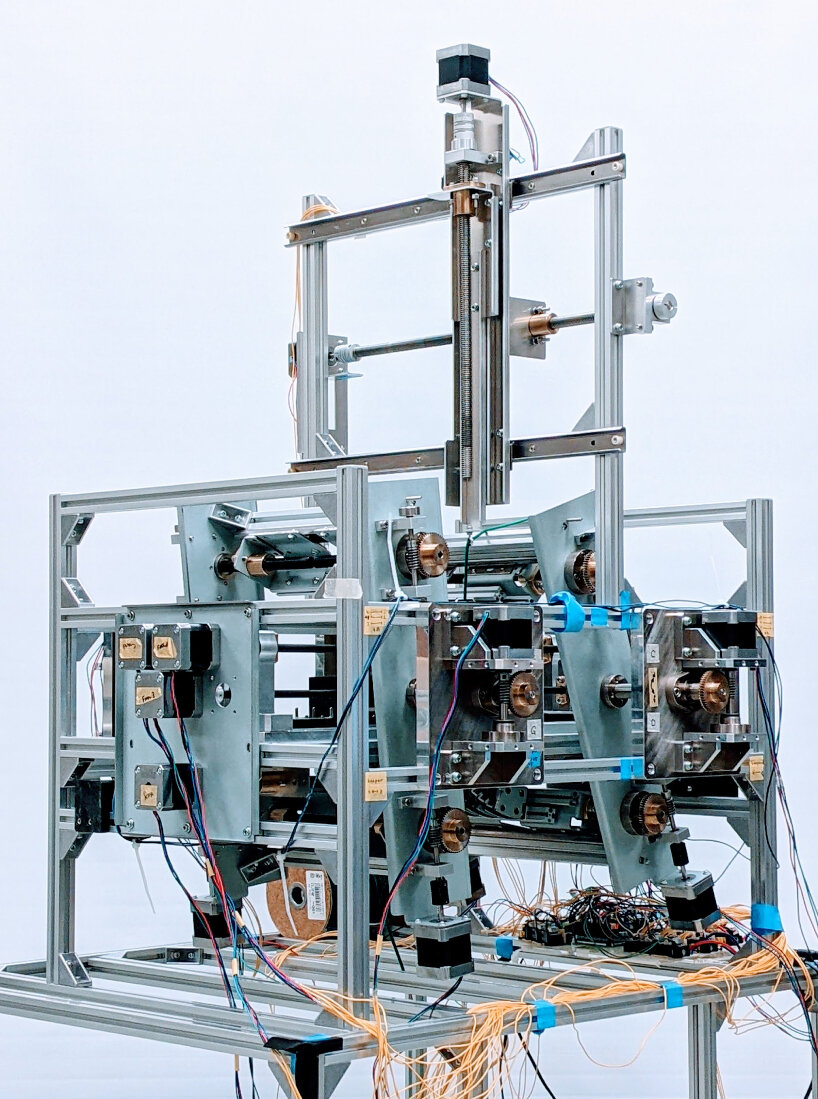
view of the machine which includes a yarn carrier
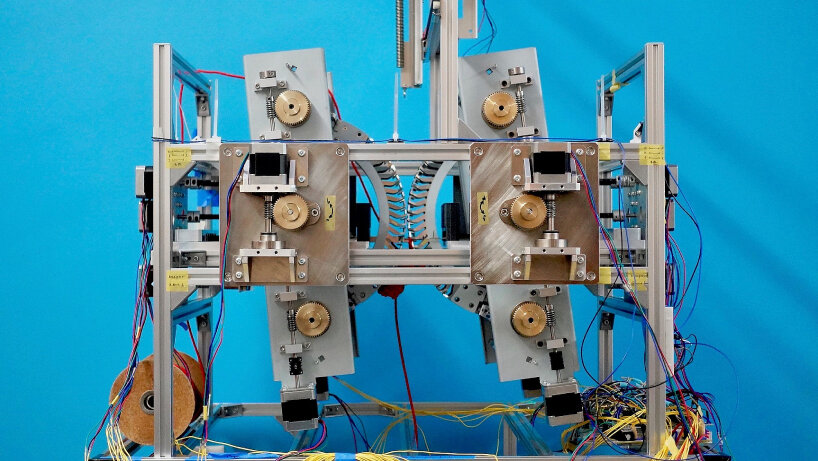
the researchers look into improving the operation of their prototype machine
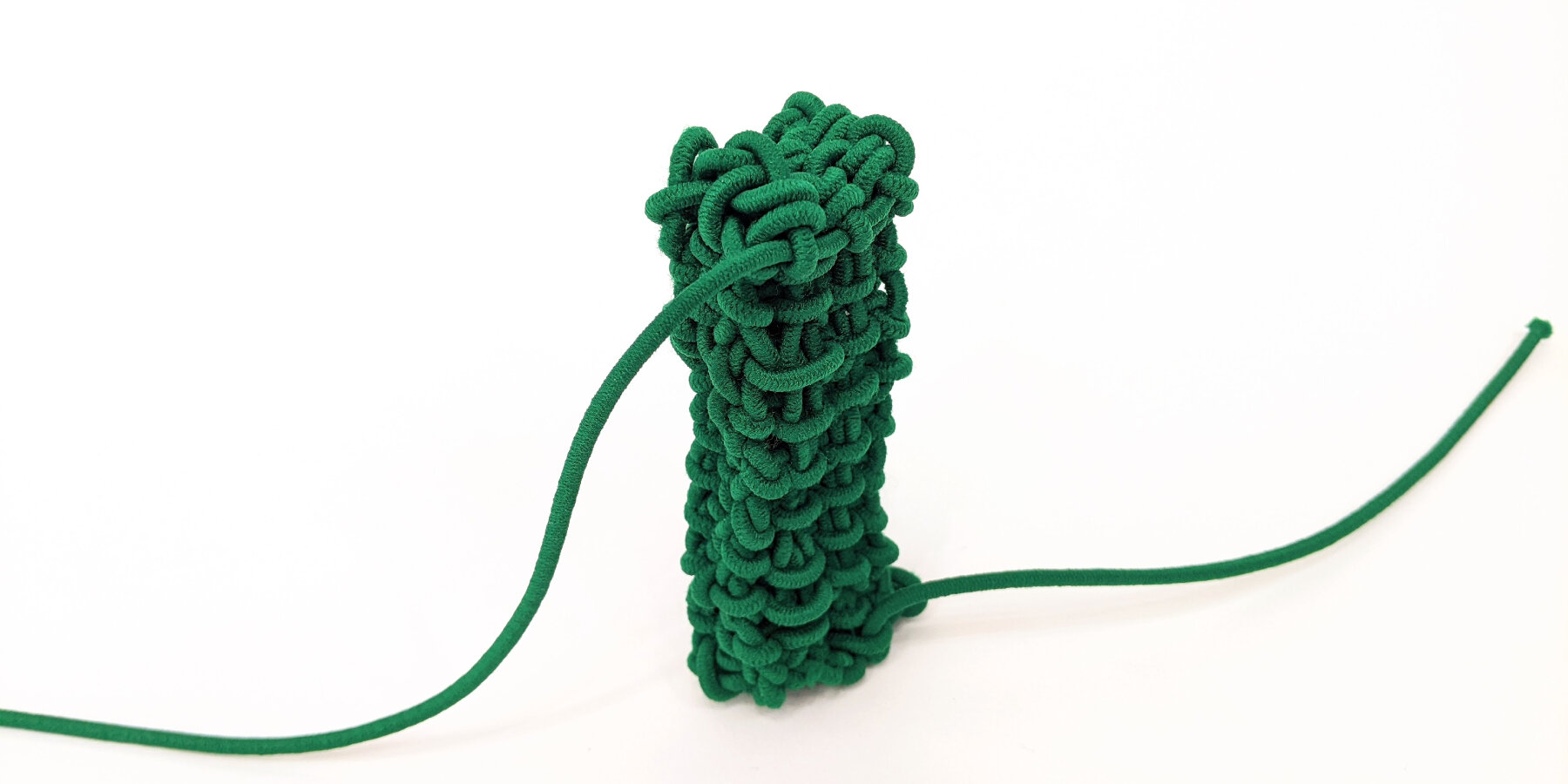
viewers can use the Solid Knitting techniques by hand
project info:
name: Solid Knitting
institution: Carnegie Mellon University | @carnegiemellon
researchers: James McCann, Yuichi Hirose, Angelica Bonilla Fominaya, Mark Gillespie

